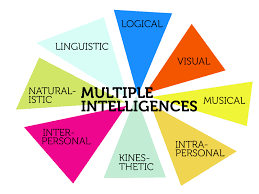The application of Dr. Howard Gardner’s multiple intelligences theory is one of the most important distinctions between Montessori education and traditional education.
In fact, Dr. Montessori was applying the central concepts of Gardner’s theory decades before he officially codified it in 1983.
The multiple intelligences theory states that there are a number (Gardner lists 8) of different “modalities” of intelligence. It also states that individuals each possess a unique blend of all the intelligences. The eight modalities defined in Gardner’s theory are: musical-rhythmic/harmonic, visual-spatial, verbal-linguistic, logical-mathematical, bodily-kinesthetic, interpersonal, intrapersonal, and naturalistic. Certain people learn much easier through certain methods, while other people may strive with those same methods. The people who struggle are not necessarily less intelligent. They may simply learn more effectively through a different modality.
The Montessori approach to education embraces this theory of multiple intelligences, and seeks to find out which modalities work best for each individual student. Traditional education, on the other hand, does a remarkably poor job of this, opting instead for a one-size-fits-all approach to learning, forcing large groups of children to learn primarily through reading and writing. This approach is not only unseccessful, it labels large numbers of children as “remedial” or “delayed” when, in fact, they are simply not being taught in the modality best suited to their needs.
If you feel the idea of multiple intelligences is important to your child’s education, then Montessori schools may be what you’re looking for. However, they are not the only schools which implement the theory into their method. Waldorf schools, as well as schools in the progressive education movement, are also great options which use the multiple intelligences theory in their method.

